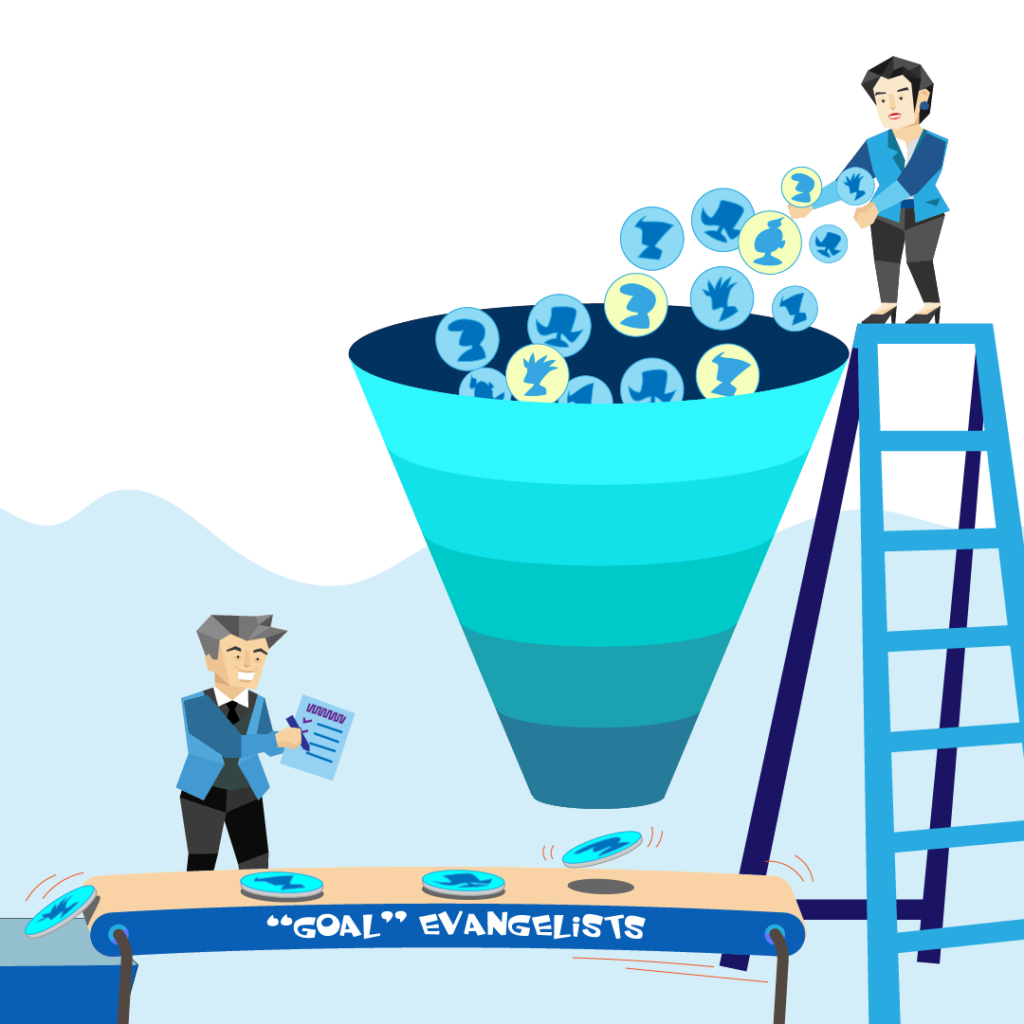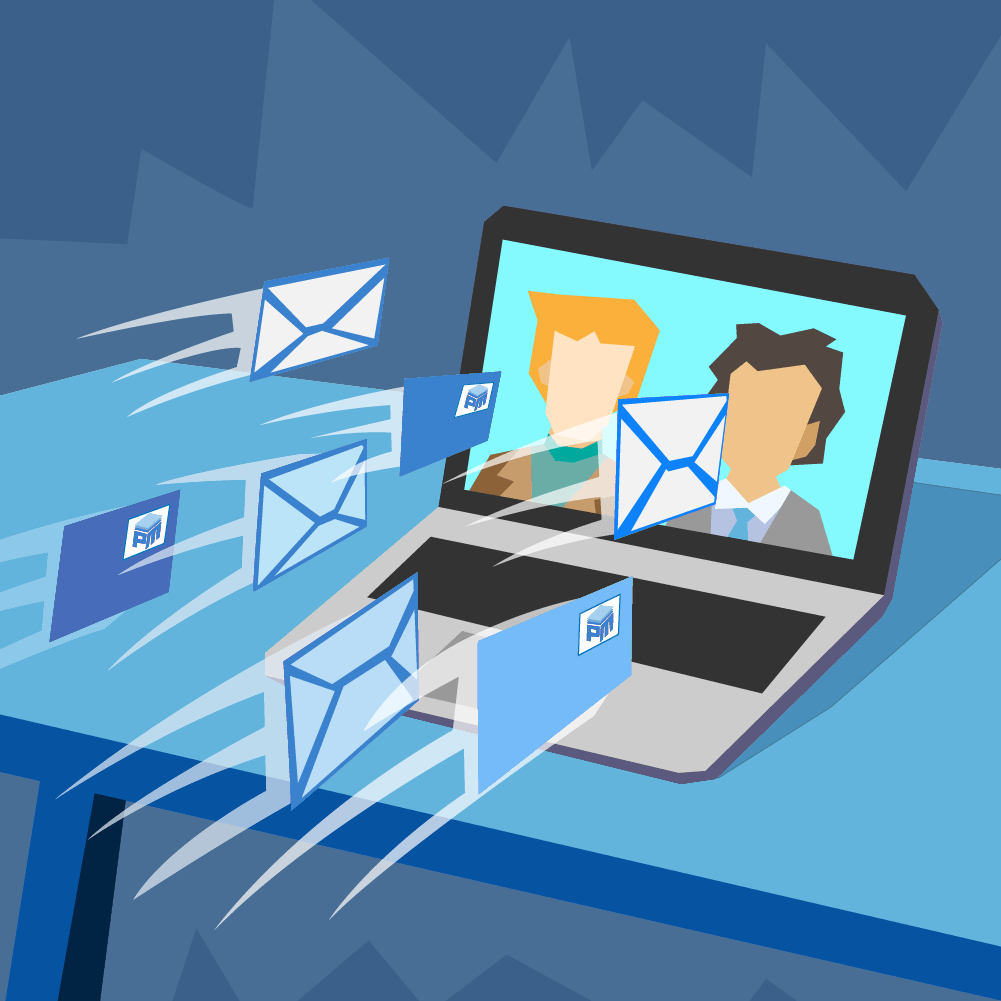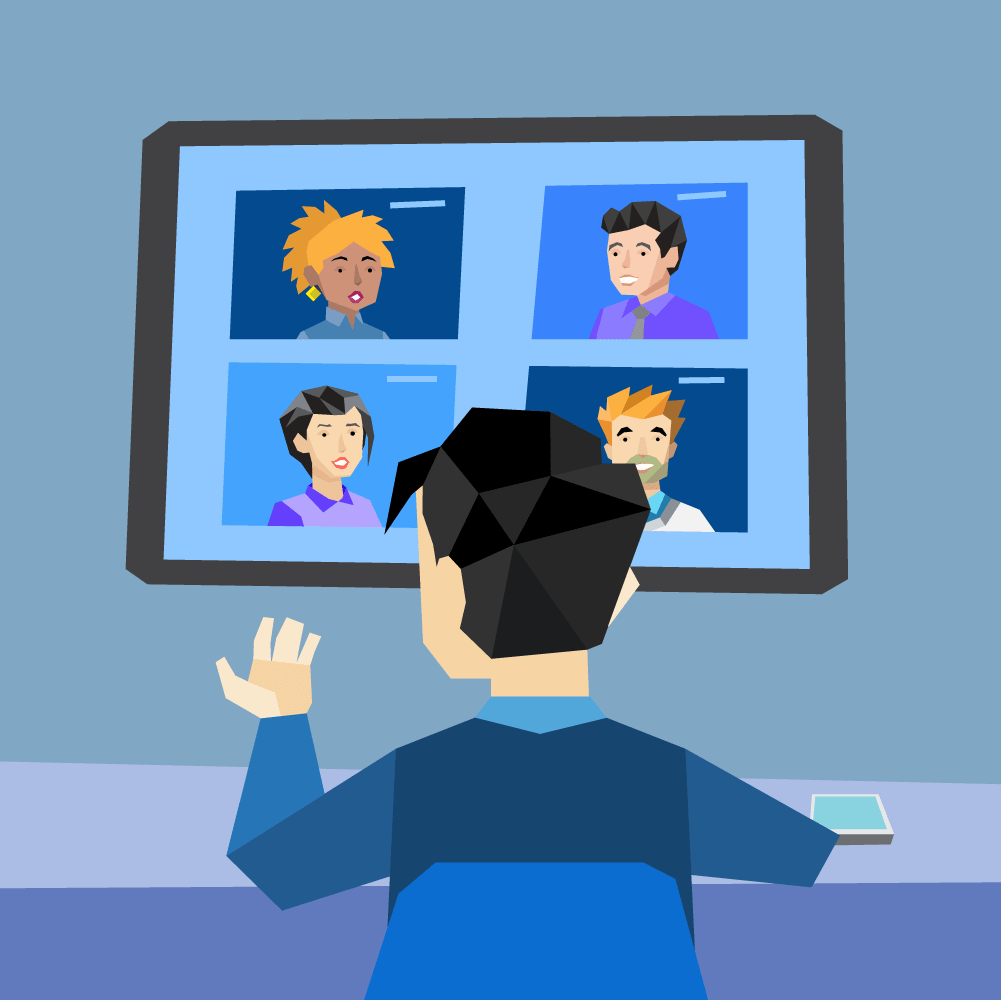Full Funnel Marketing Must Take the Entire Buyer’s Journey into Account

It seems today’s marketers are always focused on specific tactics. What kind of copy should they include on their next Facebook ad? How do they edit their photographs perfectly for Instagram? What’s the best email subject line to use?
All of these concerns are valid, but when you get too caught up with these details it leads to a problem. You tend to neglect the other parts of your marketing and their true purpose.
Your Funnel’s Overall Purpose is to Turn Strangers into Evangelists
Remember, at the end of the day, the goal of your marketing efforts are to convert strangers into customers and customers into evangelists. You aren’t just trying to get them to visit your website once and you aren’t just trying to get them to purchase from you once. The true purpose of marketing is to take people who don’t even know your brand’s name and turn them into raving fanatics who can’t wait to tell their friends and colleagues to do business with your company.
Why should this be your ultimate goal in digital marketing? Why not just be satisfied with customers buying once, or feeling merely “okay” about you?
It comes down to ROI. Research by Kapost shows that brands can expect each customer evangelist to recruit three new customers to your business. Imagine how efficient your marketing would be if you invested enough money into advertising to bring in 50 customers, then ended up with 150. This is the real power of evangelical marketing, and why you need to ensure that your marketing addresses every part of your funnel from top to bottom.
The Very Top of Your Funnel Is Filled with Strangers
But that’s not a bad thing. A top-level funnel filled with strangers simply means you have the ability to turn them into raving fans. After all, your spouse, close friends, and coworkers were once strangers too!
Leveraging Buyer Personas Allows Us to Address These Strangers
The first step in moving people from strangers to evangelists is having defined your buyer personas. With an understanding of what makes your prospects tick, you will have a better idea of how to start a relationship with them. Additionally, you know what their problems, goals, and desires are before you try to initiate a conversation with them.
Your Initial Efforts Turn These Strangers into Visitors or Observers
The first thing you must do to move the relationship from stranger to raving fan is show up where those people are searching for information. This might be a search engine or a content platform like Medium. These days, your audience is commonly on a social media network, especially Facebook and Instagram, which combined have several billion users all over the world.
The key to this step is to grab your target audience’s attention with a compelling piece of valuable information, a headline, an image, or an offer. It might be a discount on a product, a free assessment, or even a valuable piece of content like an eBook or interview. The specific tactic varies depending on the characteristics of your target audience, but ultimately, you simply need to capture that attention and compel them to visit your website for more information and to retrieve the compelling offer.
Your Next Responsibility is to Actually Compel These Visitors to Tell You Who They Are
You can call it a conversion, an opt-in, or a sign-up. What it boils down to is your target audience identifying themselves, telling you who they are and where you can reach them in exchange for the valuable offer you have. This is a massive step in building the relationship between you and your audience – they have now moved from being a complete stranger to someone with a name, an email address and hopefully a few more pertinent pieces of information.
Conversion Rate Optimization
Conversion rate optimization (CRO) refers to improving the success rate of the location you are driving people to in which they identify themselves and you deliver on your promise. This concept is typically applied to a landing page, and is calculated by comparing the number of people who visit the page to the number of people who submit their information and identify themselves by joining your email list or signing up for your offer.
CRO is vital for marketers who are getting enough exposure to their conversion offers, but are having trouble getting people to convert. You need both elements for success: adequate exposure and a well-optimized conversion point.
Once You Know Who They Are You Can Show Them What You Provide
At this point in the funnel, a stranger has identified themselves and shown a willingness to establish a relationship by giving you their name, email address and maybe even a phone number. This is a great step for your business, one you should be proud of, but your work is far from finished.
This is the “prove it” phase of the funnel. The person has shown that they could potentially want what you have to offer, but you need to prove it to them. You’ve got to educate them on why your company is the source they need for what you’re offering.
Lead Nurturing
Lead nurturing refers to the practice of continuing to provide prospects with valuable content, “nurturing” them towards a sale. The world of marketing today is so crowded and cluttered that even if your message resonates with them, most people aren’t going to buy from you immediately. They need to see multiple examples showing that you understand them and their needs. Successful lead nurturing is achieved by sending multiple examples of how you can solve their problems or help them achieve their goals.
Get Them Over the Line and Close that Sale
Of course, even with successful lead nurturing, most prospects will need a slight “nudge” before they take the plunge and become a customer. By having multiple offers for a prospect to convert on, you will be presented with the opportunity to capture even more information about them, which will help make your outreach as targeted and specific as possible. The more closely your messages align with solving his or her challenges, the more likely you are to get an inquire to discuss what a solution would look like.
Stay in Contact, Get Their Feedback, Exceed Their Expectations
Hooray, you’ve gotten a customer! But if you want evangelists, your work isn’t done. The next step is putting in the effort to ensure their experience with you is not just good, but wonderful. You want to meet their expectations, and then go above and beyond. HubSpot calls this step “customer delight.” Be sure to check in with them. Ask questions about their buying experience, and offer resources that they may need to help them with their purchase.
The overarching key here: continuously find new ways to add value, even after the prospect becomes a customer.
Stay Top of Mind So They Can Actually Recommend You
Even if a customer has an amazing experience with your brand, it’s not a guarantee they’ll become an evangelist. People have busy lives with lots of things to do, and recommending your business to people in their network is probably not at the top of that to-do list.That’s why you have to give them subtle reminders. Continuously express your appreciation for their business and constantly look for ways to serve them and make their life easier.
The Funnel is Broken into Components So That it Can Be Managed Better
Why do we divide the marketing funnel into these different stages, instead of just managing it all at once?
First, let’s explain one reason that isn’t why we break it down like this: so you can pick and choose the parts you like and don’t like. That’s not how a successful marketing funnel works. You need every element of your funnel working individually as well as collectively with other elements – that’s how you truly succeed with digital marketing today.
This Requires a Specialization in Core Tactics
The funnel is also divided up this way to let you divide up the work and strategy involved. Specialists are always more valuable than generalists. You wouldn’t hire a social media marketer to manage your email list, or a copywriter to help you design your landing page. It’s paradoxical, but when you approach your marketing funnel in a compartmentalized way, it actually makes each segment work better together. And that’s important, because…
Even Though the Funnel is Compartmentalized, Your Marketing Must Not Be
You need to pay attention to your marketing funnel on both levels – each individual component must be performing highly, but you also must have someone looking at the whole funnel and how it comes together. Without this step, it’s difficult to know where your problems are, or how you can improve.
The good news is, once you get used to the concept of analyzing your marketing funnel as both a cohesive whole and individual parts, you can reuse this approach again and again. Some companies will even create small sub-teams within their marketing department to handle individual phases of the funnel: one group for conversion rate optimization, one group for targeting paid ads, one group for delighting customers, etc.
However you decide to approach it, just remember: when all is said and done, there’s only one stat that measures your marketing: ROI. The quickest path to ROI is turning strangers into evangelists, and the best way to do that is with a well-oiled marketing funnel that works time and time again.









